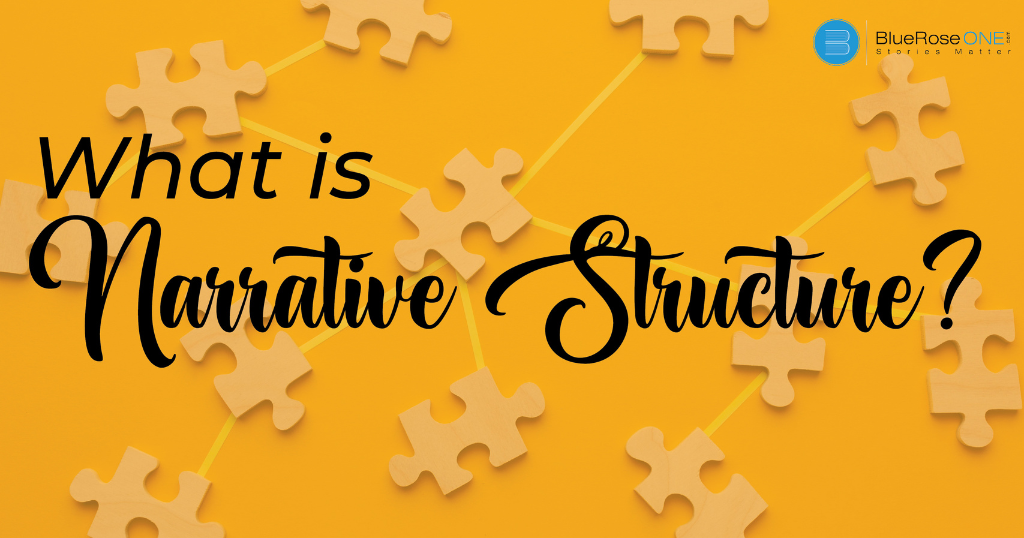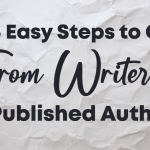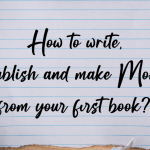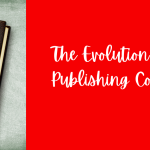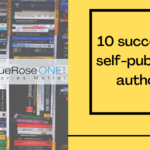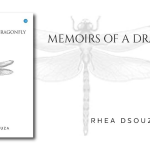Narrative structure is the framework that gives shape to a story, allowing it to unfold coherently and engagingly. Whether you’re crafting a novel, short story, or even a blog post, understanding narrative structure is crucial for captivating your audience. In this comprehensive guide, we’ll explore the definition of narrative structure, provide examples, and offer valuable tips to help you master this essential aspect of storytelling.
You may also like: Top 10 Tony Robbins Books That Inspire Success and Change
Understanding Narrative Structure
The architectural blueprint for a fascinating narrative is narrative structure, which is at the heart of storytelling. It is, at its foundation, the planned organisation of events inside a tale, balancing plot components, character arcs, and the smooth flow of information. This organisational skill is more than just a literary technique; it is a road plan that not only attracts the reader’s attention but also guides them through a meaningful and enjoyable journey.
Narrative structure, beginning with the introduction, introduces the reader to the story’s environment, reveals characters, and introduces background. The inciting incident occurs quickly after, moving the story forward with a sense of urgency. The escalating action heightens the excitement by offering difficulties and developing characters until the decisive conclusion.
Following the climax, the dropping action moves towards resolution, gently tying up loose ends and bringing the story to a close. The well-crafted narrative framework guarantees that each story element and character development are precisely positioned, resulting in a dynamic and resonant flow that increases the reader’s involvement. Finally, a well-structured story serves as a guide, orchestrating an immersive experience that lingers long after the last page is turned.
Yoy may also like: Top 10 Tony Ribbons Books That Inspire Success and Change
Components of Narrative Structure:
- Introduction/Exposition
- Inciting Incident
- Rising Action
- Climax
- Falling Action
- Resolution/Denouement

- Introduction/Exposition: The introduction or exposition acts as the literary overture in the narrative framework, setting the stage for the developing story. The author presents the key characters painstakingly, drawing realistic images of their personalities and roles in the narrative tapestry. The environment, which serves as an important backdrop, is intertwined with descriptive elements that transport the reader to a certain time and place. Furthermore, the setting is constructed effectively, providing the basis for the core conflict or theme that will carry the tale forward. A well-crafted opening captures the reader’s imagination, drawing them into a world that is both familiar and full of the promise of the unknown.
- Inciting Incident: The inciting occurrence serves as the narrative trigger, igniting the major conflict and propelling the story forward. This occurrence, which is frequently surprising and major, has a dual purpose: it piques the reader’s interest while also instilling a feeling of urgency that propels the characters ahead. It’s the point at which the ordinary morphs into the exceptional, and the story’s equilibrium is upset. The inciting occurrence is the initial beat of the narrative drum, indicating the start of a journey full of twists and turns.
- Rising Action: The increasing action pulls the tale ahead as it develops, with a succession of incidents that steadily create tension and elaborately construct the fundamental conflict. Characters who have been set in motion by the inciting occurrence encounter a slew of problems and roadblocks. These obstacles not only put the characters to the test but also develop their complexities, giving the viewer a more nuanced knowledge of their motives and shortcomings. The narrative engine is the rising action, which slowly accelerates towards the story’s climax, ensuring that each incident is a stepping stone towards the climactic reveal.
- Climax: The climax is the narrative peak, the point at which the story reaches its pinnacle of suspense and effect. It is the apex of conflict and emotion, the conclusion of the growing action. The narrative’s trajectory is irreversibly decided at this point. The decisions taken, the disputes addressed (or intensified), and the insights revealed all combine to create a cathartic and transforming event. The climax is the narrative fulcrum, where the story’s strands are tightened before unfurling towards resolution, leaving a permanent impression on both characters and readers.
- Falling Action: The falling action in the narrative structure elegantly lowers from the climactic apex, providing closure to the principal conflicts while also introducing the resolution process. Following the climactic turning moment, these are the events that resolve secondary conflicts that may have occurred amid the rising action. While the climax’s intensity begins to diminish, the dropping action performs an important function: it guides the story towards its eventual denouement. It is a period of unravelling tensions in which characters traverse the aftermath of the climax, making decisions that set the stage for the concluding chapters. The dropping action serves as a narrative exhale, enabling both characters and readers to reflect on the preceding turbulence and prepare them for the concluding chapters, where loose ends will be delicately tied.
- Resolution/Denouement: The resolution, often known as the denouement, is the point at which the narrative journey comes to an end. The story’s conclusion is revealed here, revealing the implications of the characters’ actions and decisions. The narrative’s loose ends are methodically knotted, delivering a satisfying conclusion to the numerous threads weaved throughout. Characters who have completed the story arc feel a tremendous sense of closure as their quests come to fulfilment. However, the resolution provides a reflective space, giving insights and observations on the narrative’s themes and the characters’ transforming experiences. The lingering moment invites readers to ponder the story’s significance, enabling the narrative resonance to continue beyond the last page. The resolution is the narrative’s farewell, leaving a lasting impression and ensuring the reader’s journey concludes with a sense of fulfilment and understanding.
You may also like: The Rise of Self-Publishing and What it Means for Authors
Examples of Narrative Structure:
Classic Three-Act Structure:
- Act 1: Introduction In the initial act of the classic three-act structure, the narrative unfurls with the introduction of key elements. Readers are acquainted with the protagonist, their traits, and the world they inhabit. Simultaneously, the setting is painted with descriptive strokes, offering a canvas for the unfolding tale. This act extends beyond mere character and setting introduction; it immerses readers in the world of the story, establishing the norms of the protagonist’s everyday life. The inciting incident, a disruptive event, concludes this act, shattering the tranquilly of the protagonist’s ordinary existence and propelling them into the tumultuous currents of the narrative.
- Act 2: Part I: Rising Action The second act, the rising action, propels the protagonist into a transformative journey. Now disrupted from their routine by the inciting incident, the protagonist encounters challenges, each more formidable than the last. This phase is marked by escalating tension as the protagonist’s mettle is tested and obstacles become stepping stones. The rising action dynamically weaves character development, plot thickening, and escalating stakes. It serves as a bridge between introduction and climax, compelling readers to delve deeper into the protagonist’s transformational odyssey.
- Act 2: Part II: Climax The climax stands as the narrative zenith, a pivotal moment that crystallises the tension built throughout the rising action. It often manifests as a critical decision, confrontation, or revelation, determining the story’s direction. This point of no return is the crucible where the protagonist faces their greatest challenge, making decisions with profound consequences. The climax is a narrative fulcrum, where the threads of the story are drawn tight before unfurling towards resolution. In this dramatic crescendo, the trajectory of the tale is irrevocably altered, setting the stage for the final act.
- Act 3: Part I: Falling Action The third act introduces the falling action, a phase where the consequences of the climax unfold. This is the aftermath, a period of reflection and resolution where characters grapple with the fallout of the critical turning point. While tension recedes, the falling action is not devoid of its own revelations and emotional resonance. It provides a nuanced exploration of the consequences of the climax, preparing the narrative for its conclusive moments.
- Act 3: Part II: Resolution The final act, resolution, brings the narrative journey to its ultimate destination. Here, loose ends are meticulously tied, and characters find closure or transformation. Beyond answering lingering questions, the resolution is a space for characters to undergo profound change or witness the consequences of their choices. The story concludes, leaving a lasting imprint on both characters and readers. The resolution offers insights and reflections, inviting the audience to contemplate the broader themes and messages conveyed throughout the journey. It is the final stroke of the storytelling brush, ensuring that the reader’s engagement concludes with a sense of fulfilment and understanding.
- In Media Res: Without any prelude, In Media Res, Latin for “in the midst of things,” plunges readers right into the action of a key moment. This narrative method rejects traditional linear organisation in favour of rapid engagement and heightened interest. By starting the story at a pivotal point, readers are immediately engrossed in the stakes and dynamics of the plot. Background information and context are purposefully suppressed, creating an air of mystery that pulls readers onward in pursuit of answers. This strategy not only captures the reader’s attention but also assures that they actively engage in the greater narrative puzzle as the story progresses.
- Nonlinear Structure: A nonlinear structure defies conventional chronology by telling the tale in fragments via flashbacks, temporal jumps, or unorthodox sequencing. This strategy adds layers of intricacy and fascination to the story, allowing readers to solve the puzzle of events. The storyteller presents a mosaic of viewpoints by exposing significant moments out of sequence, providing for a fuller comprehension of characters and storyline. Nonlinear storytelling engages the audience’s mind as it moves through temporal changes, resulting in a dynamic and interactive reading experience. This strategy not only violates traditional narrative rules, but it also offers an added depth of discovery for readers as they uncover the story’s complexities layer by layer.
You may also like: The Importance of Professional Editing in Self-Publishing
Tips for Crafting an Effective Narrative Structure
Now that we’ve explored the components of narrative structure, let’s delve into some practical tips to enhance your storytelling:
- Know Your Story’s Core Message:
Before crafting your narrative structure, identify the central message or theme of your story. This will help you maintain focus and coherence throughout the writing process. - Develop well-rounded characters:
Invest time in character development. Complex, relatable characters contribute to a compelling narrative. Consider their motivations, conflicts, and growth arcs within the story. - Build tension strategically.
Effective storytelling involves keeping readers engaged. Introduce conflicts and challenges incrementally to build tension. The rising action should gradually increase the stakes, leading to a satisfying climax. - Show, don’t just tell:
Engage the reader’s senses by showing actions, emotions, and settings rather than simply telling. Descriptive language enhances the reader’s immersion in the narrative. - Use pacing to your advantage.
Control the pacing of your story to maintain reader interest. Adjust the speed of your narrative by varying sentence length, incorporating dialogue, and choosing when to delve into detailed descriptions. - Experiment with Structure:
Don’t be afraid to experiment with narrative structures. Nonlinear timelines, multiple perspectives, or unconventional formats can bring a fresh and unique perspective to your storytelling. - Create memorable scenes:
Craft scenes that leave a lasting impact. Whether through emotional resonance, unexpected twists, or pivotal revelations, memorable scenes contribute to a memorable narrative. - Provide resolution, but leave room for interpretation.
While a resolution is essential for closure, leaving certain elements open to interpretation can spark curiosity and discussion among readers.
Read: How to Self-Publish an eBook and Sell It Online: A Comprehensive Guide
Mastering narrative structure is a key skill for any storyteller. Whether you’re crafting a novel, short story, or blog post, a well-organised narrative enhances the reader’s experience. By understanding the components of narrative structure, exploring examples, and implementing practical tips, you can elevate your storytelling and captivate your audience from beginning to end. Embrace the art of narrative structure and let your stories come alive with depth, purpose, and resonance.
Publish your book with BlueRoseONE and become a bestselling author. Don’t let your dream of becoming an author fade away, grab the opportunity now and publish your book – be it fiction, non fiction, poetry or more.

